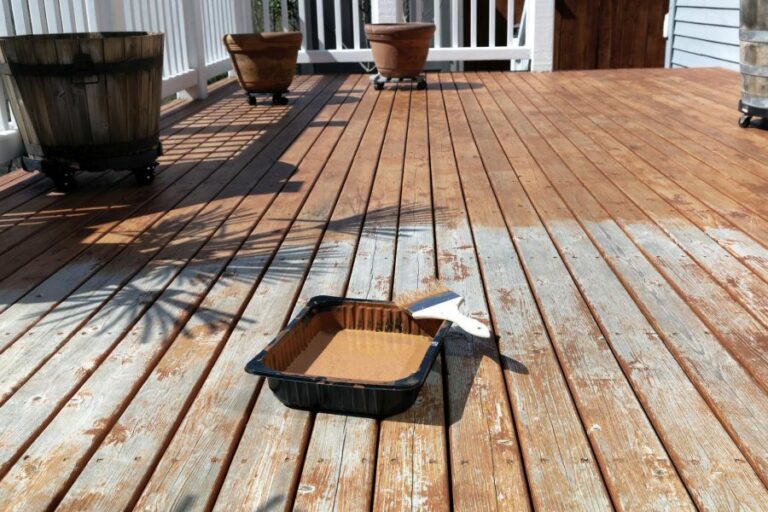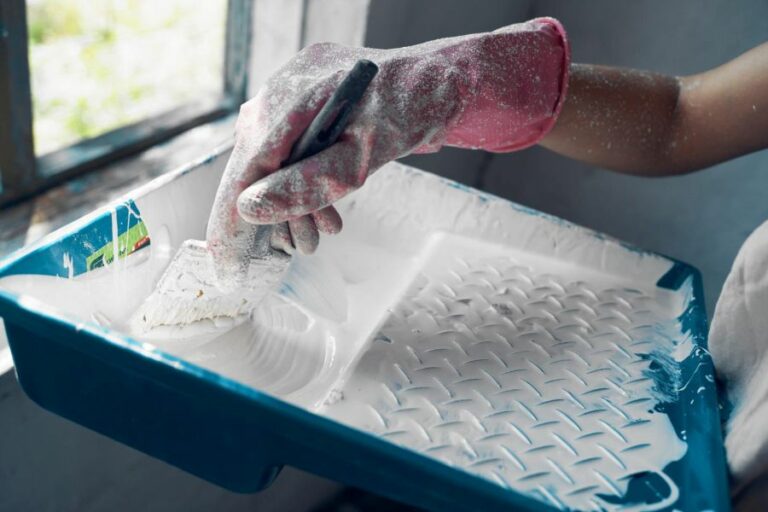Paint and Protect Plastic Items with These Outdoor Spray Paints
Are you tired of your old plastic furniture and decorations? Breathe new life into them with our comprehensive guide on outdoor spray paint for plastic! Discover how to turn your worn-out items into stunning statement pieces by learning about the best brands, techniques, and styles. No more endless scrolling through options.
Let us do the hard work for you! Prepare to revamp your outdoor space with vibrant colors and a flawless finish that will have your guests swooning. Say goodbye to dull surfaces and hello to a backyard oasis! Read on to master the art of plastic spray painting!
Outdoor spray paint for plastic:
When revitalizing plastic outdoor furniture or items, using outdoor spray paint designed for plastic is crucial. Select spray paint specifically designed for outdoor use and plastic materials to achieve professional results, considering factors such as paint composition, finish options, and color selections. Proper surface preparation and following cleaning, sanding, and masking guidelines are essential before painting.
Apply the paint in thin, even coats, allowing for drying time between applications as per the manufacturer’s instructions. By choosing the right product and following the proper techniques, outdoor plastic items can be transformed with lasting results.

Discover the ideal outdoor spray paint for plastic surfaces in this comprehensive guide. Learn about options, application techniques, and insider tips to achieve long-lasting, vibrant results. Transform your plastic items with ease and confidence.
Contents
- 1 Exterior Spray Paint Designed for Plastic Surfaces
- 2 The Ultimate Guide to Painting Plastic Surfaces Outdoors
- 3 Identifying the Most Effective Spray Paint for Use on Plastic Surfaces
- 4 Which Type of Paint Offers Weather Resistance for Plastic Surfaces?
- 4.1 • Acrylic Paints for Plastics
- 4.2 • Spray Paints for Plastics
- 4.3 • Two-Component (2K) Paints for Plastics
- 4.4 • Conclusion
- 4.5 • The Importance of Proper Surface Preparation and Paint Selection
- 4.6 • Preparing the Plastic Surface for Painting
- 4.7 • Choosing the Right Paint for Plastic Surfaces
- 4.8 • Applying Paint on Plastic Surfaces
- 4.9 • Final Thoughts
- 5 Is there any spray paint that adheres effectively to plastic surfaces?
- 6 Assessing the Suitability of Rust-Oleum Spray Paint for Plastic Surfaces
Exterior Spray Paint Designed for Plastic Surfaces
To give a fresh and modern look to plastic outdoor furniture, planters, or other items, outdoor spray paint specifically designed for plastic is the best tool. We will guide you through selecting the right outdoor spray paint, preparing your plastic pieces for painting, and achieving professional results.
• Choosing the Right Outdoor Spray Paint
Many spray paint options are on the market, but selecting a product specifically designed for outdoor use and plastic materials is essential. Here are some factors to consider when picking the right spray paint.
– Paint Composition
Spray paint formulated for plastics is made to bond to the unique characteristics of plastic surfaces. These paints often include a primer, ensuring proper adhesion to the plastic substrate.
Aside from primers, other compositions are designed to be long-lasting and resistant to fading, ensuring your freshly painted item looks great for years.
– Finish Options
Regarding finishes, outdoor spray paints for plastic are available in various options, such as gloss, semi-gloss, matte, and satin. Depending on your desired result, choose a finish that compliments your project.
– Color Selection
A wide range of colors is available with outdoor spray paint for plastic. From neutral shades to bright hues, the options are endless. Select a color that suits your outdoor space and the specific item you’re painting.
Remember that you’re not limited to one color per project. You can create eye-catching looks by layering various shades or masking techniques for intricate designs.
• Preparing the Plastic Surface
Before starting the painting process, proper surface preparation is essential for achieving professional and long-lasting results. Follow these steps to prepare your plastic items for painting:
- Clean the Surface: Begin by removing dirt, dust, or debris from the plastic surface. Use mild soap and a sponge or brush to clean stubborn grime. After cleaning, rinse thoroughly, and ensure the surface is completely dry before proceeding.
- Lightly Sand the Surface: To improve adhesion between the paint and the plastic surface, lightly sand the surface using fine-grit sandpaper. This process ensures the paint will bond properly, vital for outdoor items exposed to weather conditions. Make sure to remove any sanding residue using a cloth or tack cloth.
- Mask-Off Areas: If your plastic piece has certain areas where you don’t want the paint to be applied, use masking tape to cover those spots. Additionally, you can use masking tape to create patterns or designs on your item.
• Painting Process
With the surface prepared properly and the right spray paint in hand, it’s time to begin the painting process. Follow these steps to ensure a professional result:
- Shake the Can Well: Before using the spray paint, shake the can thoroughly for at least one minute to ensure proper paint mixing.
- Test the Spray Paint: It’s essential to test the spray paint on a piece of cardboard or another disposable material. This process allows you to check for proper paint flow and consistency while familiarizing yourself with the proper distance to hold the spray can from the surface.
- Apply Paint in Thin, Even Coats: Hold the spray can at approximately 12 inches from the surface when painting your plastic piece. Apply the paint using thin, even coats, using a back-and-forth motion at a steady pace. This process will ensure an even and well-blended finish.
- Allow Proper Drying Time: Always follow the manufacturer’s instructions for drying times between coats. Generally, waiting at least 10 minutes between coats is recommended to ensure the previous coat has properly cured.
- Apply Multiple Coats: Depending on the color and coverage desired, you may need to apply multiple coats of paint. Follow the guidelines mentioned earlier for proper drying times between coats.
- Removing Masking Tape: Once the final coat has thoroughly dried, remove any masking tape from your plastic piece to reveal the finished product.
• Final Thoughts
Outdoor spray paint designed for plastics will effortlessly transform outdoor plastic items’ look. Professional and lasting results can be achieved by selecting the right product, adequately preparing the surface, and following proper painting techniques.
So, the next time you consider giving your plastic outdoor items a makeover, follow these tips to ensure a successful project.
The Ultimate Guide to Painting Plastic Surfaces Outdoors
Are you planning to change the look of your outdoor plastic furniture or spruce up your old garden shed? Well, a fresh coat of paint can best answer your needs. But you might wonder, “What paint can I use on plastic outside?” If you’re unsure which paint to use for outdoor plastics, you’ve come to the right place.
We will break down everything you need to know about painting plastic surfaces outdoors so that you can confidently choose the right product and achieve stunning results.
• Why Choosing the Right Paint Matters
Although several different types of paint are available, not all are suitable for outdoor plastic surfaces. Choosing the right paint can lead to better adhesion, peeling, or chipping, effectively ruining your project.
Selecting the right paint for your specific plastic surface ensures a long-lasting, durable, and attractive finish.
• When to Use Acrylic Paint
When painting plastic, acrylic paint is one of the most popular choices. It’s water-based, dries quickly, and has low odors, making it ideal for outdoor application. High-quality acrylic paint can provide excellent durability and resistance to harsh outdoor conditions.
Some key benefits of using acrylic paint on plastic outdoors include:
- Easy to apply and clean up with water
- Low odor and low VOCs
- Non-toxic and eco-friendly
- Dries to a smooth, durable finish
- A wide range of colors is available.
However, it would help if you only used acrylic paint on properly prepped plastic surfaces to ensure proper adhesion, as it may not stick well to shiny or slick plastics. Additionally, a primer and sealer is crucial for getting the best results.
• Spray Paint: A Convenient Choice
For a hassle-free and quick option, consider spray paint specifically designed for plastic surfaces. These paints create a smooth, factory-like finish, providing excellent adhesion and durability.
The popular choices are the Rust-Oleum Specialty Plastic Spray Paint and Krylon Fusion All-In-One Spray Paint. Some advantages of using spray paint on your outdoor plastic projects include the following:
- Easy and quick application
- Good coverage with fewer coats
- Fast-drying formula
- Creates a smooth, even finish
- Available in various colors and finishes
Always use spray paint in a well-ventilated area and follow the manufacturer’s instructions for the best results.
• When to Consider Epoxy Paint
Epoxy paint is another option for outdoor plastic surfaces, especially when you need a tough, durable, and long-lasting finish. It’s an excellent choice for heavy-traffic areas such as outdoor furniture, as it can withstand wear, tear, and weather conditions.
Some advantages of epoxy paint on outdoor plastic surfaces include the following:
- Superior durability and resistance to chipping
- High-gloss finish
- Water and chemical-resistant
- Can adhere to various surfaces, including plastics
However, epoxy paint may be more difficult to work with than other paint types due to its sticky nature and specific application procedures. It also requires a longer drying time compared to other options.
• Prepping Your Plastic Surface for Painting
Regardless of which paint you choose, proper surface preparation is essential. Your paint will adhere better and last longer if you follow these simple steps before painting:
- Clean the Surface: Remove any dirt, dust, and debris from the surface using soap, water, and a sponge or cloth. Rinse thoroughly to avoid leaving soap residue behind, and let the surface dry completely.
- Sand the Surface: Lightly sand the entire surface using fine-grit sandpaper (180-220 grit) to create a slightly rough texture. This step aids paint adhesion and ensures a better and more even coat. After sanding, wipe away any dust or particles.
- Apply a Primer: A primer specifically designed for plastic surfaces is crucial for enhancing paint adhesion and improving the durability of the topcoat. Ensure the primer is compatible with the paint you plan to use.
• Helpful Tips for Painting Plastic Outdoors
- Always follow the manufacturer’s instructions regarding the application, drying time, and other important details.
- Avoid painting under direct sunlight or in extreme temperatures, as it can affect the drying process and the final result.
- Apply thin, even coats of paint and allow each coat to dry thoroughly before applying the next coat.
- Seal your painted plastic surface with a clear sealer or varnish for added durability and protection against the elements.
With these tips and information, you can confidently choose the right paint for your outdoor plastic projects and achieve professional-looking results. So, ready your paintbrushes or spray cans and say hello to vibrant, refreshed plastic surfaces!
Identifying the Most Effective Spray Paint for Use on Plastic Surfaces
As someone with experience working with various spray paints and plastic surfaces, I understand the struggle of finding the right paint that will adhere properly and provide a lasting finish.
We will discuss the best spray paint for plastic and explore important factors to consider when choosing the right paint for your project.
• Spray Paints Specifically Designed for Plastics
It is vital to work with a spray paint specifically designed for plastic surfaces for optimal results. These paints are formulated to bond effectively with plastic materials and provide a durable, long-lasting finish.
– Krylon Fusion for Plastic
I highly recommend Krylon Fusion for Plastic as a reliable option for painting various plastic surfaces. This paint is formulated to bond directly with plastic material without requiring any primer, and it dries up quickly, taking only 15 minutes for it to become touch-dry.
Another benefit of Krylon Fusion for Plastic is that it provides excellent resistance to weather, which is an essential factor when working with outdoor items. Additionally, this paint is compatible with various types of plastics, including PVC, polypropylene, and fiberglass, making it an excellent choice for various projects.
– Rust-Oleum Painter’s Touch 2X
Rust-Oleum Painter’s Touch 2X is another outstanding spray paint option for plastic materials. This paint is designed with a double-cover technology, so you’ll need fewer coats to achieve full coverage.
With a quick dry time and increased resistance to chipping and fading, Rust-Oleum Painter’s Touch 2X provides excellent long-term durability. Furthermore, it is also suitable for indoor and outdoor projects, making it highly versatile.
– Valspar Outdoor Plastic Spray Paint
For outdoor projects specifically, Valspar Outdoor Plastic Spray Paint is a fantastic choice. This paint is formulated specifically for exterior plastics, ensuring they bond properly and provide a lasting finish.
Valspar Outdoor Plastic Spray Paint is highly resistant to UV rays and strong enough to withstand sun exposure without fading or discoloration. This feature is perfect for items exposed to direct sunlight, such as patio furniture or garden ornaments.
• Prepping Plastic Surfaces for Painting
Before applying any spray paint to a plastic surface, proper preparation is essential. This step will ensure the paint adheres correctly and provides a durable finish.
– Cleaning the Surface
First, thoroughly clean the plastic surface to remove dirt, grease, or grime. Use a solution of warm water, mild dish soap, and a soft cloth to wipe the surface gently. Rinse off the soap and dry the plastic surface thoroughly before painting.
– Sanding the Surface
Light sanding is recommended to help the spray paint adhere to the plastic surface. Use fine-grit sandpaper (between 180 and 220-grit) for sanding the surface gently. This step will create small scratches on the surface, allowing the paint to bond effectively.
Wipe the surface with a clean, damp cloth or a tack cloth to remove any sanding dust before painting.
• Applying the Spray Paint
To achieve the best results, follow these tips when applying the spray paint to plastic surfaces:
- Shake the spray paint can thoroughly for at least one minute, and occasionally shake it during the painting process.
- Hold the spray paint can at a distance of about 12 inches from the plastic surface.
- Apply the paint using thin, even coats, using a side-to-side motion.
- Allow the paint to dry for the recommended dry time mentioned on the paint can (generally between 10 and 30 minutes) before applying additional coats if needed.
Always follow the manufacturer’s guidelines for the specific paint you are using.
• Protecting the Painted Surface
Lastly, apply a clear coat to the painted plastic surface to ensure a long-lasting finish. A clear coat protects against elements, such as UV rays or moisture. Choose a clear coat compatible with the spray paint you used for optimal results.
In conclusion, choosing the right spray paint for plastic can make all the difference in ensuring a successful and durable result. Considering the abovementioned factors, you can confidently select the appropriate paint for your project and enjoy a beautifully painted plastic surface for years.
Brand | Product Name |
|---|---|
Rust-Oleum | Painter’s Touch 2X Ultra Cover |
Krylon | Fusion All-In-One |
Montana | Plastic Primer |
Pactra | Spray Acrylic Paint for RC Bodies |
SEM | Spray Paint for Vinyl and Plastic |
Which Type of Paint Offers Weather Resistance for Plastic Surfaces?
Creating a long-lasting and aesthetically pleasing paint job on plastic surfaces can be challenging. The key is selecting the right paint compatible with plastic and providing superior weather resistance.
We will discuss the top weather-resistant paint options available for plastics, their unique features and precautions when using them, and offer our recommendations.
• Acrylic Paints for Plastics
Acrylic paints are one of the most popular and widely used paint types for various surfaces, including plastics. They offer substantial benefits in terms of weather resistance, as follows:
– Features of Acrylic Paints
- Water-based: Acrylic paints are water-based, making them easy to clean up with water and soap and more environmentally friendly than solvent-based paints.
- Fast-drying: They dry quickly, often within minutes, reducing the risk of dust particles and other contaminants settling on the painted surface.
- UV resistance: High-quality acrylic paints are formulated with UV inhibitors, enhancing their durability and color retention when exposed to sunlight.
- Flexible: Acrylic paint films have good flexibility, allowing them to expand and contract with temperature fluctuations without cracking or peeling, making them suitable for indoor and outdoor applications.
– Precautions and Recommendations
While acrylic paints are generally compatible with most plastics, it is essential to ensure that the specific plastic material you are working with can be painted using acrylics. Some plastics, such as polyethylene and polypropylene, require special surface preparation, like flame treatment or a compatible primer, to ensure proper adhesion.
We recommend choosing high-quality, artist-grade acrylics from reputable brands like Liquitex, Golden, or Winsor & Newton. Although these products may be more expensive than lower-quality alternatives, the cost is justified by their superior performance and longevity.
• Spray Paints for Plastics
If you prefer a smoother finish and a quicker painting process, spray paints specifically designed for plastics are an excellent option. These paints contain unique formulations that allow for greater adhesion and weather resistance on various plastic surfaces.
– Features of Spray Paints
- Ease of application: Spray paints provide a smooth, even finish without the need for brush strokes, making them ideal for larger surfaces or intricate detailing.
- Quick-drying: Many spray paints for plastics are formulated to dry quickly, preventing the accumulation of dust and debris on the surface during the drying process.
- Wide range of colors and finishes: Specialty plastic spray paints are available in a broad spectrum of colors, as well as various finishes, including glossy, matte, and textured.
– Precautions and Recommendations
Safety is paramount when using spray paints, so ensure you work in a well-ventilated area and wear appropriate protective gear, such as a mask and gloves. Additionally, follow the manufacturer’s instructions on proper application and drying times.
Some popular and reliable spray paint brands for plastics include Krylon Fusion, Rust-Oleum Painter’s Touch, and Montana Plastic Primer. These brands offer excellent adhesion, weather resistance, and color retention.
• Two-Component (2K) Paints for Plastics
For professional and heavy-duty applications, two-component (2K) paint systems, consisting of a base coat and hardener, offer outstanding performance and durability on plastic surfaces.
– Features of Two-Component Paints
- Exceptional adhesion: 2K paints form a strong bond with the plastic substrate, enhancing their resistance to peeling, chipping, and cracking.
- Increased durability: The hardener component in 2K paints imparts increased resistance to weathering, moisture, chemicals, and UV rays.
- Smooth finish: The high-quality finish obtained with 2K paint systems is ideal for automotive and industrial applications.
– Precautions and Recommendations
When using 2K paint systems, careful surface preparation is critical for optimal adhesion, including cleaning, degreasing, and priming with a suitable plastic primer. Additionally, 2K paints often require specialized equipment, such as a spray gun and air compressor, and are best applied by experienced professionals.
Popular 2K paint systems for plastics include automotive paint brands like PPG, Axalta, and BASF. These products offer robust durability and resistance to weathering, making them suitable for automotive and other demanding applications.
• Conclusion
In summary, weather-resistant plastic paint options include acrylic paints, spray paints, and two-component paint systems. Choosing the right paint for your project depends on your requirements, skill level, and desired finish.
I recommend selecting high-quality products from reputable brands and following the manufacturer’s instructions for optimal results. With the proper materials and techniques, you can confidently create a durable, attractive, and weather-resistant paint job on plastic surfaces.
• The Importance of Proper Surface Preparation and Paint Selection
Over time, you may decide that your plastic outdoor furniture or siding needs a new coat of paint. Although plastic surfaces may seem like better candidates for traditional exterior paint, there are methods for achieving a solid, attractive, and lasting paint application.
Proper surface preparation, a thorough understanding of the paint products available, and the appropriate choice of paint are all critical factors for a successful painting project.
• Preparing the Plastic Surface for Painting
Before you begin your plastic painting project, it is essential to follow these preliminary steps to ensure optimal adhesion and long-lasting results.
– Thorough Cleaning
The first step to successfully painting plastic surfaces is a thorough cleaning. Dirt, dust, oils, and other contaminants can hinder paint adhesion, leading to a less durable or uneven finish.
Start by rinsing the surface with water to remove large dirt particles, then use mild soap and a soft-bristled brush to scrub the plastic. Rinse thoroughly and allow to dry completely before proceeding.
– Light Sanding
Sanding your plastic is essential because it helps create a texture that allows the primer and paint to adhere better. Using fine-grit sandpaper, like 220-grit or a Scotch-Brite pad, lightly sand the surface until it is no longer glossy.
Be sure to sand evenly and in the same direction for a consistent surface. After sanding, use a tack cloth or a damp rag to remove sanding dust.
– Taping and Protecting
When painting plastic, it’s important to protect any areas you don’t want to be painted. Use painter’s tape to protect surrounding areas, and cover any gaps or openings with plastic sheeting or drop cloths.
• Choosing the Right Paint for Plastic Surfaces
Selecting the appropriate paint for plastic materials is crucial. Some paints don’t adhere well to plastic surfaces, leading to poor durability and negative aesthetic outcomes. Therefore, it’s wise to invest time researching and choosing the right type of paint for your specific plastic project.
– Primer
Using a quality primer specifically designed for plastic will significantly improve the adhesion and longevity of your paint job. I recommend using a primer like Rust-Oleum Specialty Plastic Primer, Krylon Fusion for Plastic, or XIM Plastic Bonding Primer.
These specialty primers chemically bond to the plastic surface, ensuring excellent adhesion and creating an even base for applying paint.
– Acrylic Latex Paint
Acrylic latex paints are a popular choice for painting plastic surfaces, as they dry quickly, are water-based for easy clean-up, and adhere well to a primed plastic surface. Choose a higher-quality, exterior-grade acrylic latex paint for the best performance, durability, and weather resistance.
– Paints for Plastic
There are dedicated paints for plastic surfaces, including aerosol spray, brush-on, and artist paints. Brands like Krylon, Valspar, and Rust-Oleum offer a variety of products designed to bond well to plastic and provide durable, attractive finishes.
• Applying Paint on Plastic Surfaces
After you’ve chosen your paint, it’s time to apply it to your prepared plastic surface. The right technique will depend on the type of paint you’ve chosen, so be sure to read the manufacturer’s instructions carefully.
I recommend practicing your painting technique on a scrap plastic material for a perfect finish.
– Brush Application
If you’re using brush-on paint, use a high-quality brush made for acrylic paint. Apply the paint in thin, even coats, allowing the first coat to dry completely before applying a second coat.
Following the manufacturer’s recommendations for drying and curing times will ensure optimal results.
– Spray Application
Spray painting offers a smooth, even finish on plastic surfaces. When using aerosol spray paint, shake the can vigorously for the recommended time, then begin spraying a light, sweeping motion approximately 12 inches away from the surface.
Apply multiple thin coats, allowing each coat to dry before adding another. Popular spray paint for plastic options includes Krylon Fusion for Plastic and Rust-Oleum Paint for Plastic.
• Final Thoughts
Achieving a quality, durable, and good-looking paint finish on plastic surfaces is achievable by following the steps outlined in this guide. The key is proper surface preparation, selecting the right paint products, and following the best painting technique.
By adhering to these principles and learning from personal experience, you will be well on your way to effectively painting plastic surfaces to enhance their appearance and extend their lifespan.
Step | Description |
|---|---|
1 | Wipe the surface with a tack cloth to remove dust from the sanding. |
2 | Rinse the plastic surface with clean water and let it dry completely. |
3 | Lightly sand the plastic surface with fine-grit sandpaper to create a slightly rough surface for the paint to adhere to. |
4 | Following the manufacturer’s instructions, apply a plastic primer to the surface in a thin, even coat. Allow it to dry completely. |
5 | Wipe the surface with a tack cloth to remove dust from the sanding. |
6 | Wipe the surface with a tack cloth to remove any dust left from the sanding. |
7 | If needed, apply a second coat of paint, allowing it to dry completely. This will provide better coverage and durability. |
Is there any spray paint that adheres effectively to plastic surfaces?
Spray painting plastic surfaces can be a tricky process. It allows for an inexpensive yet transformative update to various objects, whether toys, outdoor furniture, or plastic storage containers. However, knowing which spray paints will adhere properly to the plastic surface is essential to ensure the best results.
We will discuss the different types of spray paints that work well on plastic surfaces and key factors to consider when selecting the right paint and preparing the surface before painting.
• Understand the Difference: Enamel, Acrylic, and Specialty Plastic Spray Paints
Three main types of spray paints can potentially adhere to plastic surfaces: enamel, acrylic, and specialty plastic spray paints. Each of these types differs in its composition and adherence properties.
– Enamel Spray Paint
Enamel spray paint is oil-based, which provides a glossy, hard, and durable finish. This type of paint is often more resistant to environmental factors than other spray paints.
However, its oil-based nature may not work well with plastic surfaces, causing the paint to crack or peel off over time.
– Acrylic Spray Paint
Acrylic spray paint is water-based and fast-drying, making it a popular choice for various painting projects. It offers a semi-gloss finish and is less toxic than enamel paints. Acrylic paint is known to be more flexible than enamel, allowing it to adhere better to plastic surfaces.
However, not all acrylic spray paints are specifically formulated for plastic, which may compromise adhesion and durability.
– Specialty Plastic Spray Paint
These spray paints are explicitly designed to bond with plastic surfaces, providing maximum adhesion and durability. Specialty plastic spray paints often contain special additives or formulations that help the paint stick to plastic better than enamel or acrylic paints.
When selecting spray paint for your plastic project, choosing specialty plastic paint is highly recommended for the best results.
• Factors to Consider When Choosing a Spray Paint for Plastic
When selecting the right spray paint to use on plastic surfaces, there are several factors you should consider to ensure maximum adhesion and durability.
– Brand Reputation
Not all spray paint brands are created equal. Some may offer better quality, adhesion, and finish than others. Look for reputable brands with positive reviews when selecting your spray paint. Brands like Krylon, Rust-Oleum, and Valspar are known to have products specifically designed for plastic surfaces.
– Paint Formulation
Choose a spray paint explicitly designed for plastic surfaces, as it would have the right formulation for better adhesion and durability. Check the product labels for information on the paint’s suitability for plastics.
– Surface Preparation
Proper surface preparation ensures the spray paint adheres well to the plastic. Before painting, ensure the surface is clean, dry, and free from oils, dust, or dirt that may have accumulated. Light surface sanding with fine sandpaper (around 400-600 grit) can also help the paint bond better with the plastic.
– Primer
Using a plastic primer before spray painting can improve the adhesion and result in a smoother, more even finish. Several brands offer plastic-specific primers to be used with their plastic spray paints.
– Application Technique
The correct application technique is essential to achieve an even, durable finish. Apply multiple thin layers of paint, allowing each layer to dry before applying the next. This will prevent paint from pooling or dripping, ensuring a better result.
• Recommendations for Best Plastic Spray Paints
Based on personal experience and research, here are some recommendations for spray paints that work well on plastic surfaces:
- Krylon Fusion for Plastic: This paint is designed for plastic surfaces, providing maximum adhesion without priming. It comes in various colors and finishes, allowing for a customized result.
- Rust-Oleum Painter’s Touch 2X Ultra Cover: This acrylic spray paint bonds well with plastic surfaces, has a low odor, and provides a smooth, durable finish.
- Valspar Plastic Primer and Plastic Spray Paint: This two-step system from Valspar includes a plastic-specific primer and paint, ensuring a smooth, even finish that adheres well to plastic surfaces.
In conclusion, while not all spray paints will stick well to plastic surfaces, there are specific types available, such as specialty plastic paint, that have been formulated to provide maximum adhesion and durability. Proper surface preparation, priming, and application technique are critical factors in a successful plastic spray painting project.
By considering these factors and selecting a reputable paint brand, you can achieve long-lasting, transformative results on your plastic items.
Assessing the Suitability of Rust-Oleum Spray Paint for Plastic Surfaces
Rust-Oleumis a well-known brand in the world of paint products, offering various solutions for various surfaces. One of the common questions that many people have is whether Rust-Oleumspray paint is suitable and effective for plastic surfaces.
I will discuss the effectiveness of Rust-Oleum spray paint when used on plastic, tips for its proper application, and some of the popular Rust-Oleum product options available for plastic surfaces.
• Compatibility of Rust-Oleum Spray Paint with Plastic
Rust-Oleum offers different lines of spray paints specifically formulated to bond effectively with plastic surfaces. Products such as the Rust-Oleum Painter’s Touch 2X Ultra Cover, Rust-Oleum Universal All Surface Spray Paint, and Rust-Oleum Specialty Plastic Primer demonstrate the versatility and suitability of Rust-Oleum spray paint for plastic.
These products provide excellent adhesion, coverage, and durability when used on plastic surfaces. They are designed to resist chipping, fading, and peeling, ensuring your plastic items look great for a long time.
• Tips for Proper Application of Rust-Oleum Spray Paint on Plastic
To achieve the best results when using Rust-Oleum spray paint on plastic, follow these essential tips:
– 1. Prepare the Surface
Preparing the plastic surface is crucial for the optimal adhesion of the spray paint. Begin by cleaning the surface with soap and water to remove any dirt, grease, or debris.
Afterward, wipe the surface with rubbing alcohol or a similar solvent to ensure it is free of contaminants, which may cause the paint to peel or bubble.
– 2. Use a Primer
Although Rust-Oleum spray paint for plastic is designed to bond directly to the surface, using a primer can provide better adhesion and durability for the paint job. Rust-Oleum Specialty Plastic Primer is an excellent option, specifically designed for use on plastic surfaces.
– 3. Apply the Spray Paint in Thin, Even Coats
When applying Rust-Oleum spray paint on plastic, it is essential to use thin, even coats. This prevents paint runs and ensures that the paint bonds well with the surface.
Allow each coat to dry for a few minutes before applying the next one. Typically, 2-3 coats of spray paint are sufficient for optimal coverage and finish.
– 4. Allow Adequate Dry Time
After applying the desired number of coats, allow the paint to dry thoroughly. Rust-Oleum recommends waiting at least 24 hours before handling the painted item to ensure the paint has completely cured.
• Popular Rust-Oleum Spray Paint Products for Plastic
Rust-Oleum offers multiple options for those looking to paint plastic surfaces. Here are a few popular choices:
– Rust-Oleum Painter’s Touch 2X Ultra Cover
This line of spray paint is specifically designed for use on various surfaces, including plastic. It offers twice the coverage of other spray paint brands, allowing you to cover more area with fewer coats.
Additionally, it is available in a wide range of colors and finishes, from satin to gloss, making it a versatile choice for various projects.
– Rust-Oleum Universal All Surface Spray Paint
This all-surface spray paint offers excellent adhesion and durability on plastic surfaces. Its advanced trigger system allows an easy, consistent application, preventing finger fatigue during long painting sessions. Plus, the paint dries quickly and is resistant to fading and chipping.
– Rust-Oleum Specialty Plastic Primer
As mentioned, using a primer specifically designed for plastic surfaces is a great way to improve adhesion and durability. This primer from Rust-Oleum is easy to apply and dries quickly, providing an ideal base for any Rust-Oleum spray paint designed for plastic.
• Conclusion
In summary, Rust-Oleum spray paint is suitable and effective for plastic surfaces, provided the proper products, such as the ones mentioned above, are used. By following the recommended surface preparation and application tips, you can achieve outstanding results when using Rust-Oleum spray paint on plastic items.
The wide variety of colors and finishes also allows for endless possibilities when personalizing and rejuvenating your plastic objects.







